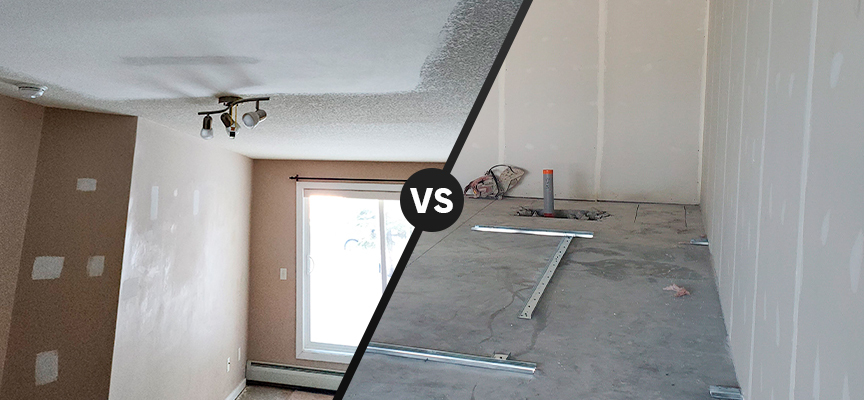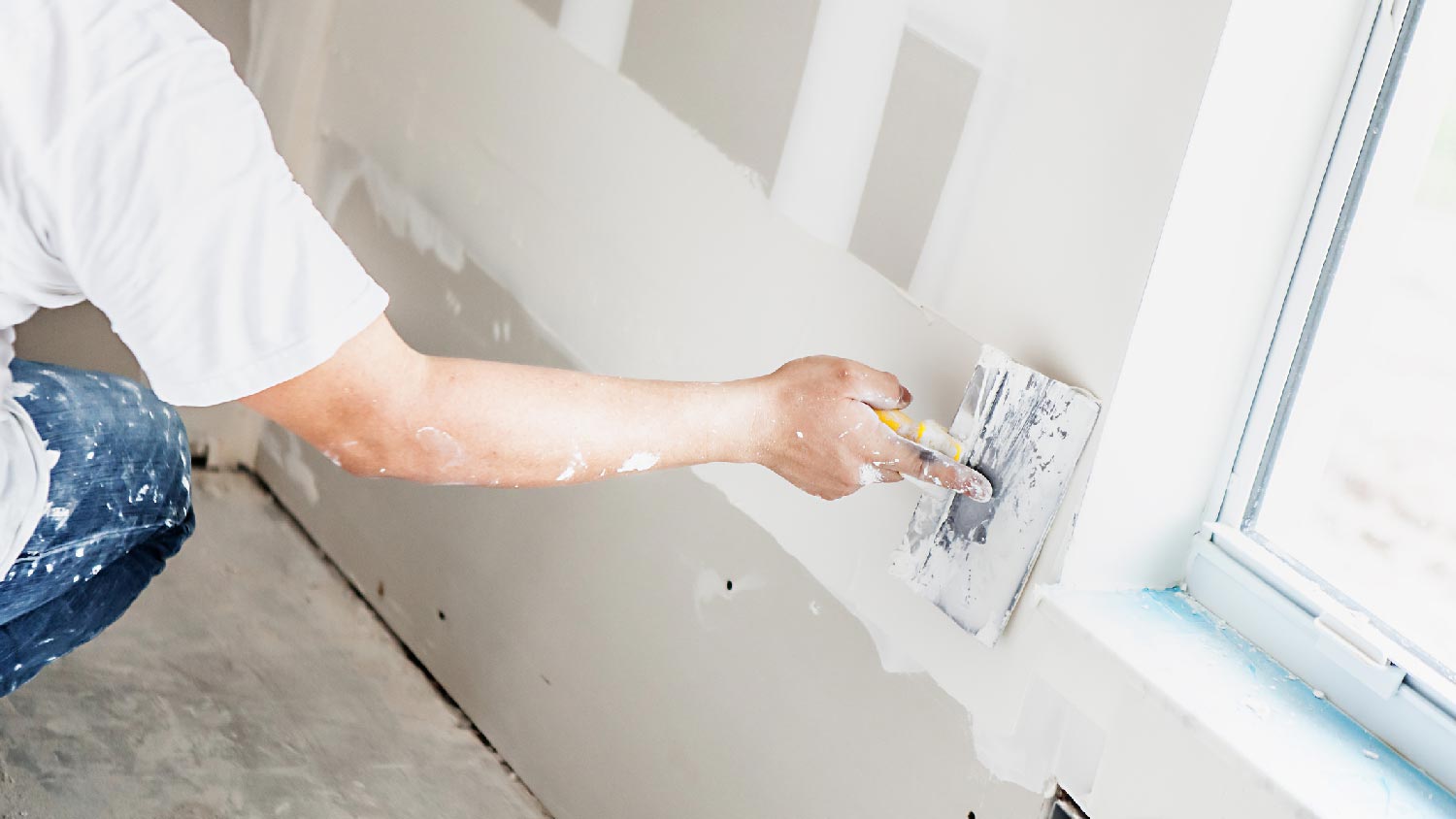Make every wall look flawless with Drywall Installation Ogden Utah and custom painting techniques.
Discover the most effective Practices for Successful Drywall Repair and Installment
The art of drywall fixing and installation requires a blend of skill and precision. Grasping the crucial tools is important for accomplishing a seamless coating. Comprehending the step-by-step procedure can make a substantial difference in the final outcome. Proper methods for taping and mudding are additionally vital. What remains is the understanding of maintenance that ensures long life. These components together produce a sleek end result worth checking out better.

Vital Tools for Drywall Repair Service and Installment
When carrying out drywall repair work and installment, having the right devices can substantially boost the effectiveness and top quality of the job. An utility blade is important for reducing drywall sheets precisely, while a drywall saw can aid in making much more detailed cuts. Taping knives, readily available in various dimensions, are vital for using joint substance efficiently and uniformly. A drywall sander, ideally with a dust collection attribute, assists accomplish a polished finish, minimizing the requirement for considerable cleaning.
In addition, a gauging tape assurances precise measurements, and a degree ensures that installments are straight and plumb. Safety equipment, consisting of dirt masks and safety glasses, should not be ignored to protect against particles and dirt. A stud finder aids in situating framing members, assuring secure installment. By furnishing oneself with these vital devices, the repair work and installation procedure becomes extra convenient and leads to a professional-quality outcome.

Step-by-Step Overview to Patching Holes
Covering openings in drywall requires an organized strategy to ensure a seamless repair. The area around the opening have to be cleansed and any kind of loose debris removed. For small holes, a putty knife can be utilized to use a lightweight spackle, pushing it into the opening and smoothing the surface area. After it dries out, fining sand is important to create a flat surface. For larger holes, a spot of drywall might be needed. This includes cutting an item of drywall slightly bigger than the hole, securing it to the wall surface with screws, and utilizing joint compound to cover the joints. When the compound dries out, it ought to be fined sand smooth. Lastly, priming the patched location prior to painting will guarantee an also coating. Following these steps will lead to a professional-looking fixing that mixes effortlessly with the bordering wall.
Techniques for Smooth Drywall Setup
Achieving smooth drywall setup needs cautious planning and implementation. Initially, it is important to determine and cut drywall sheets accurately to minimize spaces. Using an utility blade, installers should score the board before snapping it along the cut line, making sure tidy edges. Properly lining up the sheets is important; beginning with the top and functioning down aids keep harmony.
Fastening drywall to the studs needs constant spacing, typically every 16 inches, making use of screws as opposed to nails for better hold. This method reduces the threat of stands out over time. In addition, startling the seams between sheets improves structural stability and reduces the exposure of joints.
Ultimately, utilizing the best thickness of drywall for certain locations-- such as moisture-resistant kinds in restrooms-- further contributes to a perfect finish. Complying with these techniques will certainly cause a professional-looking and smooth installation, setting the stage for the succeeding finishing processes.
Finishing Touches: Taping and Mudding
Ending up touches, such as taping and mudding, play a crucial role in attaining a refined drywall surface. Taping involves using a thin strip of drywall tape over the joints and joints, making certain a smooth appearance. This process helps protect against splits and produces a solid bond between drywall sheets. It is essential to pick the best kind of tape, with paper and fiberglass fit together being the most common options.
Mudding, or applying joint substance, follows taping. This compound completes voids and smooths out the surface area for a consistent finish. It is usually applied in numerous layers, with each coat requiring to completely dry before fining sand. Proper strategy involves feathering the sides to blend the substance into the bordering drywall, reducing presence.
When completed properly, mudding and taping enhance both the structural and aesthetic honesty of the drywall installation, causing a professional-quality surface.
Tips for Keeping Your Drywall After Setup

Furthermore, preserving a constant interior moisture degree can prevent bending or mold development. Utilizing a dehumidifier in moist areas, like basements, is recommended. It's likewise valuable to periodically repaint areas that show wear, as this shields the underlying product. When moving furnishings or installing components, care should be exercised to prevent harming the drywall. By complying with these upkeep tips, home owners can extend the life of their drywall, securing it remains an eye-catching feature of their insides.
Frequently Asked Concerns
What Safety And Security Gear Is Essential for Drywall Repair Work and Setup?
For drywall fixing and installation, crucial safety gear consists of safety goggles to secure eyes, dust masks to avoid breathing of fragments, handwear covers for hand protection, and knee pads for comfort during long term kneeling. drywall contractor.
Exactly how Do I Establish the Drywall Thickness Needed for My Job?
To determine the drywall thickness required for a project, one must consider the wall's structural demands, regional building regulations, and the planned use website the area, typically going with 5/8-inch or 1/2-inch drywall.
Can I Repair Drywall Without Removing Furnishings From the Area?
Yes, drywall can be fixed without removing furniture from the space. Careful planning and safety actions can lessen mess, enabling effective fixings while keeping surrounding products safe from dust and damages throughout the procedure.
What Types of Drywall Are Ideal for Various Environments?
Moisture-resistant drywall is excellent for kitchens and restrooms, while soundproof drywall matches shared walls in apartment or condos. Fire-rated drywall is best for garages, and basic drywall functions well as a whole living areas, making certain durability and suitability for various environments.
The length of time Does It Consider Drywall Mud to Dry Totally?
Drywall mud commonly takes 24 to 2 days to completely dry entirely, depending upon elements like moisture and temperature level (Interior Painting). Thicker applications may need longer drying times, while thinner layers can dry out quicker. Appropriate air flow aids drying out
The art of drywall repair service and setup requires a mix of skill and precision. When undertaking drywall repair and installation, having the right devices can greatly enhance the effectiveness and quality of the job. An utility knife is important for reducing drywall sheets specifically, while a drywall saw can aid in making more elaborate cuts. Accomplishing seamless drywall installation demands mindful planning and implementation. Moisture-resistant drywall is optimal for shower rooms and kitchen areas, while soundproof drywall suits shared wall surfaces in apartments.